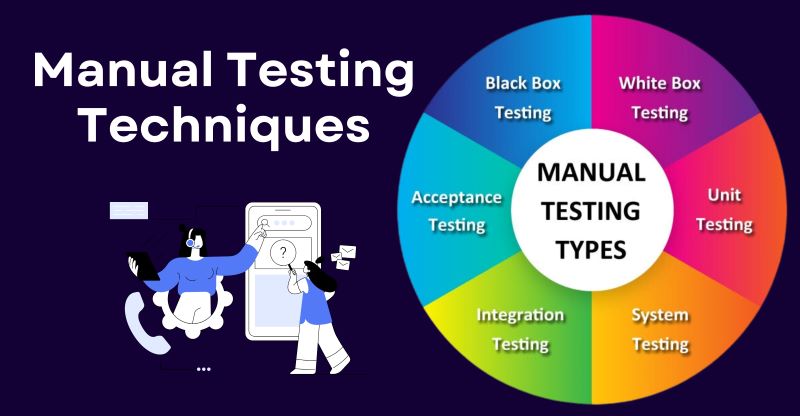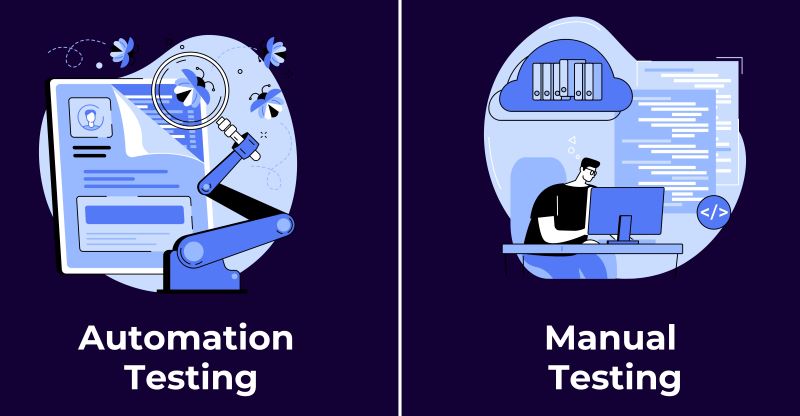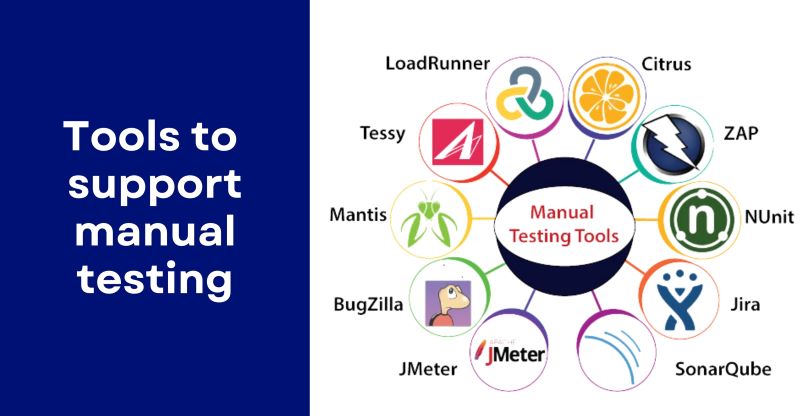
Decoding manual testing techniques
In the fast-paced world of software development, ensuring your product is top-notch is paramount. While automation testing has its merits, manual testing techniques remain indispensable for uncovering hidden flaws and delivering a seamless user experience. In this comprehensive guide, we’ll delve into the art of manual testing, exploring its various techniques and empowering you to elevate your software quality to new heights.
Learn about manual testing techniques
Definition of manual testing
Manual testing is a software testing method that is performed entirely by hand by the tester. It does not use any automated tools; instead, the tester directly interacts with the software to identify bugs and ensure the software operates according to the requirements.
The primary objective of manual testing is to detect defects and ensure the quality of the software. It involves checking the user interface, functionality, performance, security, usability, and various other aspects of the software.

Why manual testing matters
Before we dive into the specifics, let’s understand why manual testing techniques are so crucial.
- Unveiling the human touch: Automated tests are excellent for repetitive tasks, but they lack the human intuition that can spot subtle inconsistencies or usability issues. Manual testing allows you to step into the shoes of your users, experiencing the software firsthand and identifying areas for improvement.
- Adapting to change: In the dynamic world of software development, requirements and features can evolve rapidly. Manual testing offers the flexibility to adapt your testing approach on the fly, ensuring your tests stay aligned with the latest changes.
- Exploring the unexplored: Automated tests are confined to predefined scenarios. Manual testing empowers you to explore the software creatively, uncovering unexpected edge cases and potential vulnerabilities that automated tests might miss.
When to apply manual testing
Manual testing is often applied in the following scenarios:
When flexibility and adaptability are required
- Exploratory testing: This is an unplanned testing process where the tester relies on intuition, experience, and understanding of the application to explore potential scenarios and identify bugs.
- New or recently changed features: When new updates are made, manual testing allows testers to quickly check the changes and assess their impact on the entire system.
- Small projects or limited budgets: Manual testing doesn’t require investment in automation tools and infrastructure, making it suitable for small-scale projects.
When evaluating user experience
- Usability testing: Manual testing enables direct observation of how users interact with the application, identifying issues in interface design, user experience, and suggesting improvements.
- UI testing: Testers can thoroughly check each interface element, ensuring they display correctly across different devices and browsers.
When testing complex or Hard-to-automate scenarios
- Testing special, rare cases: Some situations may be difficult to reproduce or simulate using automated tools; manual testing allows testers to control and examine these cases.
- Testing features involving human factors: For example, voice recognition, gestures, emotions, etc., require direct human evaluation.
In the early stages of software development
When requirements change frequently: In the early stages, requirements may change continuously, and manual testing adapts more easily to these changes compared to writing and updating automated test scripts.
Comparison between manual testing and automated testing
Manual testing and automated testing are both essential software testing methods, each with its own set of advantages and disadvantages:

Manual Testing
Advantages of manual testing
- Cost-effective: Lower initial costs compared to automated testing.
- Quick feedback: Provides fast feedback on the user interface.
- Time-saving for minor changes: Efficient when dealing with small changes in the software.
- Skill enhancement: Allows testers to manually execute complex tests, which helps in honing their testing skills.
Disadvantages of manual testing
- Labor-intensive: Requires more manpower to execute tests.
- Time-consuming: Takes more time and effort.
- Less reliable: Generally less reliable than automated testing.
- Limited usefulness: Best suited for test cases that are executed only once or twice.
- Lack of reusability: Testing process is not recorded, making it non-reusable.
Automated testing
Advantages of automated testing
- Efficiency: Automates test cases, reducing the time and effort required.
- High reliability: Minimizes human errors, increasing reliability.
- Handles complexity: Supports the execution of complex and repetitive test cases.
- Increased productivity: Enhances the efficiency and productivity of the testing process.
Disadvantages of automated testing
- High initial costs: Requires a significant initial investment to set up and maintain the automated testing system.
- Programming skills needed: Requires knowledge and skills in programming to develop automated test scripts.
- Automation limitations: Difficult to automate test cases that are not suited for automation.
- Cannot address human factors: Unable to detect issues related to human factors or user interface nuances.
Exploring popular manual testing techniques
In the world of software, testing plays a critical role, acting as a filtering net that eliminates bugs and potential instabilities, ensuring the final product reaches users in its most perfect form. Manual testing, characterized by its hands-on nature without relying on any automated tools, requires the tester’s keen eye and deep understanding. Below are some popular manual testing techniques you can refer to:
Unit testing
Unit testing is the initial testing phase, focusing on the smallest units of software, also known as “units”—the building blocks of the system’s structure. For example, a unit could be a function, a module, or a class. Testers will verify whether the unit functions as expected and meets all the specified technical requirements.
In Unit testing, testers will set up test cases for each unit, then run experiments and record the results. If a unit doesn’t perform correctly, the tester will report the issue to the developer for correction.
Unit testing is extremely important as it helps identify errors early, reduces repair costs, and ensures the quality of each small component within the system.

System testing
System testing is a comprehensive evaluation phase to determine whether the software system operates according to the requirements and meets the established objectives.
Unlike unit testing, which focuses on individual units, System testing examines the functionality of the entire system, including interactions between modules, components, and even the user interface (UI). Testers will execute test cases based on the system’s requirements, then evaluate the results based on criteria such as performance, functionality, security, and usability.
System testing is typically conducted after units have been tested and defects have been resolved. It ensures that the small units have been integrated into a complete system that functions smoothly and meets user needs.
Black box testing & White box testing
Black box testing and White box testing are two commonly used manual testing methods in software. They share the same goal: finding defects, but differ in their approach.
Black box testing is akin to “looking from the outside,” where the tester does not need to know the internal structure of the system and only focuses on the software’s functionality and interface. Testers will create test cases based on user requirements, then run tests and evaluate results based on criteria such as functionality, performance, and usability.
White box testing, on the other hand, involves “looking from the inside,” where the tester needs to understand the system’s structure and source code to create test cases that check each line of code, each function, and each module. This approach allows testers to detect errors in complex code sections, revealing potential issues that Black Box Testing might miss.
Acceptance testing
Acceptance testing is considered the final step in the testing process, aiming to confirm whether the software system meets all user requirements.
Acceptance testing is usually conducted by the users themselves or their representatives, who will assess whether the software is easy to use, user-friendly, and meets their needs.
Acceptance testing is crucial as it ensures the software has been developed according to user requirements, enhancing the likelihood of acceptance and usage of the product.
Integration testing
Integration testing examines whether the system’s modules and components have been correctly and effectively integrated.
After individual units are tested, they are combined into modules, and these modules are integrated to form the system. Integration Testing checks whether the modules and components operate smoothly, interact correctly, and process information efficiently.
Integration Testing is vital in ensuring that small components are connected to form a complete system that functions seamlessly and meets the overall objectives.
Comprehensive manual testing process
Requirement analysis
- Thoroughly study requirement documents, functional specifications, use cases, etc., to fully understand the objectives, scope, and functions of the software that need to be tested.
- Identify potential risks and prioritize testing efforts.
- Communicate with stakeholders (BA, PM, Dev, etc.) to clarify any ambiguous requirements.
Test planning
- Define testing objectives, scope, and the types of testing to be conducted (functional testing, performance testing, usability testing, etc.).
- Determine the necessary resources (personnel, equipment, testing environment, etc.).
- Estimate the time and cost required for testing activities.
- Create a detailed testing schedule.
Test case design
- Analyze requirements and functionalities to identify the necessary test cases.
- Write detailed test cases, including execution steps, input data, expected results, etc.
- Ensure that test cases cover all requirements and functionalities comprehensively.
- Review and approve the test cases.
Test environment setup
- Prepare the necessary hardware and software environments for testing.
- Install the software version to be tested and any supporting testing tools.
- Configure the test environment to closely resemble the actual production environment.
Test execution
- Execute the test cases as defined in the steps.
- Record actual results and compare them with expected results.
- Report any defects found and monitor the defect resolution process.
- Perform retesting after defects have been fixed.
Test reporting and evaluation
- Compile test results, including the number of test cases executed, the number of defects found, etc.
- Evaluate the software quality based on the test results.
- Provide recommendations on software release or improvement.
- Store test documents for future reference.
Essential tools for professional manual testers
In the ever-evolving world of technology, having the right support tools is crucial for any Manual Tester. These tools not only enhance work efficiency but also provide optimal solutions to the challenges faced during software testing.

Test case management tools
Zephyr and TestLink are among the most popular and trusted test case management tools by many testing professionals.
- Zephyr stands out with its seamless integration with Jira, allowing you to manage test cases, track progress, and report test results with ease.
- On the other hand, TestLink focuses on creating test cases, managing test suites, test results, and generating reports. Both tools offer user-friendly interfaces, making them suitable for projects of all sizes, from small to large.
Bug tracking tools
Jira and Trello are leading tools in bug management, supporting effective team collaboration.
- Jira boasts a rich set of features, including issue management, progress tracking, bug reporting, and project management.
- Trello focuses on task management, organizing tasks using Kanban boards, allowing you to clearly track the progress of each task. Utilizing Jira and Trello will enable you to easily manage and monitor arising bugs, ensuring transparency in the handling process and improving team collaboration efficiency.
API testing
API testing is a crucial part of ensuring software quality. Postman and REST Assured are two tools that help you effectively test APIs.
- Postman is well-known for its ability to send API requests, check response data, and support test automation.
- REST Assured offers a powerful Java library that allows you to write professional and easy API test scripts. Using Postman and REST Assured will help you test the features, performance, and security of APIs in a professional manner.
Using the right support tools will help you optimize resources, improve work efficiency, and deliver more professional testing experiences.
While automated testing has its place, manual testing techniques remain an essential tool in the software tester’s arsenal. Through this article by Solution Of Blockchain, we hope to provide you with a clearer understanding of the concept and various manual testing techniques.



